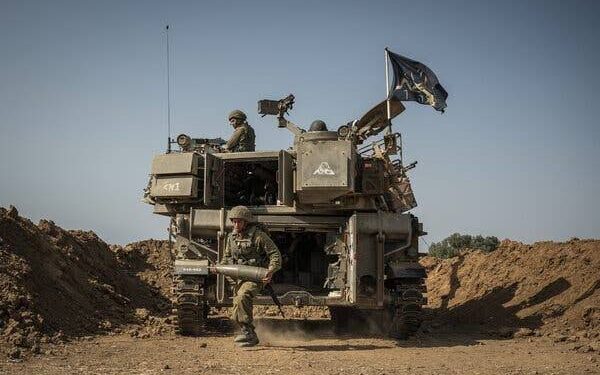Intense conflict unfolded in northern Gaza as Israeli Prime Minister Benjamin Netanyahu officially declared a new stage in the ongoing hostilities.
The Israel Defense Forces responded by releasing a series of images showcasing military operations conducted inside Palestinian territory.
This development came against a backdrop of weeks of ferocious air strikes, leading to a grim assessment by Prime Minister Netanyahu of a “long and difficult” war ahead.
As a response to the escalating situation, Palestinian civilians in besieged areas were once again advised to flee.
The warning followed a series of devastating air strikes and an explosion at the assembly complex in the region.
The Palestinian militant group Hamas, through its military wing Ezzedine al-Qassam Brigades, reported engaging in “heavy fighting” with what they termed as “invading occupation forces.”
In parallel, the Israel Defense Forces claimed to have targeted more than “450 terror targets,” including operational command centers, observation posts, and anti-tank missile launch posts.
Tragically, the military also reported the loss of 31-year-old Sergeant Yinon Fleishman in Gaza, highlighting the human cost of the conflict.
The situation on the ground prompted a call from the Israeli army for Palestinian civilians to head south “to a safer area.”
The move suggested a potential shift in the conflict dynamics, with a looming concern of a fierce urban war.
However, as the conflict intensifies, the toll on Gaza’s two-plus million residents becomes increasingly alarming.
The territory remains under siege, limiting residents’ ability to leave, while only a trickle of humanitarian aid is permitted to enter.
Meanwhile, Israel has undertaken one of the most intense bombing campaigns in recent memory, raising international concerns about the well-being of civilians.
Amidst the chaos, the United Nations reported that “thousands of people” ransacked its warehouses in search of essential supplies.
Simultaneously, efforts to deliver humanitarian aid faced challenges, with only 33 trucks entering Gaza from Egypt, falling significantly short of the 100 trucks per day recommended by aid groups.
The conflict’s impact on civilians and infrastructure is becoming increasingly evident, raising questions about the stability of the region and the effectiveness of humanitarian interventions.
As the situation unfolds, international actors are closely monitoring developments, emphasizing the urgent need for a diplomatic resolution and increased support for affected populations.












